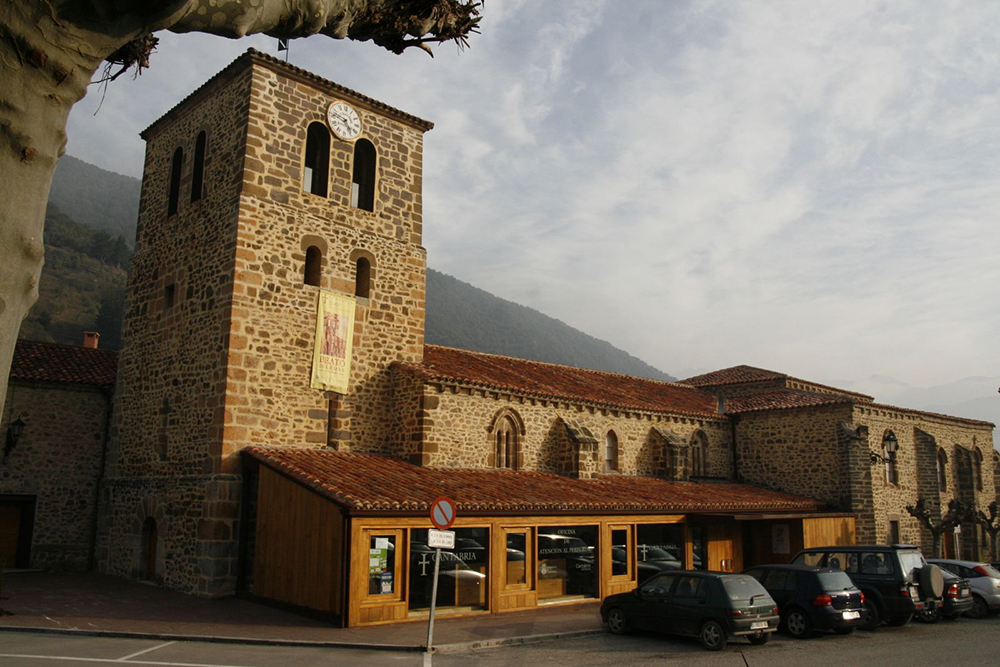The protection of the architectural patrimony and of the historical and cultural heritage is the aim of an international conference that will take place in Potes, in the autonomous region of Cantabria, in Spain, from 19 to 21 March 2015. A great example places of worship is the Via Francigena, the pilgrim route running from France to Rome that in the last few years has been successfully re-launched.

The event is part of the ALTERheritage project, financed by Leonardo Programme.
The European religious sites are not only a symbol or a pilgrim place: they represent an artistic patrimony, our history and at the same time the future for new generations. They are also a destination for sustainable tourism, in respect of the environment and of local communities. Heritage is often put at risk by wars, robberies, fire and, lately, by unregulated construction projects or just neglected by member states.
This issue is very topical in Italy: the Franciscan monks have recently organized a fund raising for restoring the Basilica di San Francesco D’Assisi’s frescos. Thanks to this successful initiative, they are collecting funds from all European countries. It is not by chance that a Dutch proverb says: “Everything of value is defenseless (alles van waarde is weerloos)”.
The ALTERheritage project focuses on life-long practical training of those working in managing and preserving this precious heritage in national and local contexts.
The project is an initiative of the European network for historic places of worship – Future for Religious Heritage (FRH). Among the partners are the Department of Conservation of the University of Gothenburg, in Sweden, Media K Gmbh in Germany, KU Leuven – Raymond Lemaire International Centre for Conservation in Belgium, The Churches Conservation Trust in England, the Sociedad Regional de Cultura y Deporte in Spain and the Museum Catharijneconvent in The Netherlands.
Dedicated to experts, the event will be hosted by Centro de Estudios Lebaniegos in Potes.
The programme includes visits of religious sites, such as the Santo Toribio de Liébana Monastery (that is one of the holy places since the Middle Age, as Rome, Jerusalem and Santiago de Compostela), Santa María de Lebeña Church and Santa María la Real de Piasca Church.
Among the participants: Miguel Ángel Serna Oliveira, regional Minister for Education, Culture and Sports of the Cantabria Government; Francisco Javier Gómez Ruiz, Mayor of Potes; Joaquín Solanas, General Director of Culture for the Cantabria Government; Pilar G. Bahamonde, Centro de Estudios Lebaniegos Director; Segundo Leonardo Pérez López, Dean of the Santiago de Compostela Cathedral; Olivier de Rohan Chabot, President of FRH Future for Religious Heritage and President of “La Sauvegarde de l’Art Français”; the architect José María Páez and Enrique Campuzano, Director of Dioceses Museum of Santillana.
The three-day conference will be the occasion to present Religiana, another project initiated by FRH, on religious heritage and tourism. Religiana promotes those buildings to both secular and non-secular audiences, by developing a multilingual smartphone, tablet and computer application.
Religiana is available not only to individuals, but to organizations who can help promote interest in Europe’s religious heritage, such as tourist promotion offices, tour operators, guide books, and map makers. It is managed jointly by the FRH, who has developed the software, and its members in different countries, who run the scheme locally.
Lilian Grootswagers, FRH Council Secretary, was interviewed by EurActiv.it: “Religious Heritage represents, and by far, the largest single category of European patrimony and it is widely cherished as part of Europe’s Cultural heritage by its citizens. A recent EU poll showed 4 out of 5 consider the religious buildings in their midst to be crucial. Knowledge transfer and innovation is needed on a European level, if this remarkable patrimony is to be handed down to future generations. FRH’s ambition is to provide a strong structural framework for ongoing inter-cultural and sectorial exchanges of ideas and problems, regarding religious heritage protection, conservation and management, with active participation from organizations and individuals across Europe.
ALTERheritage is an EU project that is focused on collecting and sharing knowledge, ideas and expertise. We are very pleased the Sociedad Regional de Educación, Cultura y Deporte del Gobierno de Cantabria is one of the partners in this project and is willing to share their expertise”.
Directed and acted by George Clooney, “The Monuments Men” is a Hollywood action drama focusing on an World War II platoon, tasked with going into Germany to rescue artistic masterpieces from Nazi thieves, and returning them to their rightful owners. The Monuments man put their lives at risk to protect and defend mankind’s greatest achievements, as the sculpture of the Madonna and Child in Bruges.
The aim of Future for Religious Heritage is precisely to support “monuments men and women” across Europe.





Follow us: